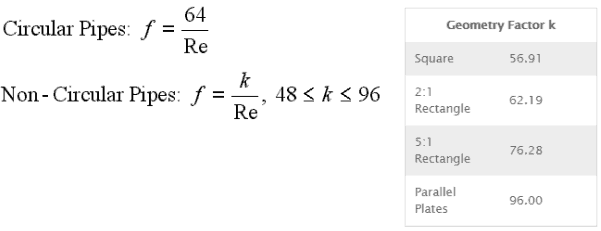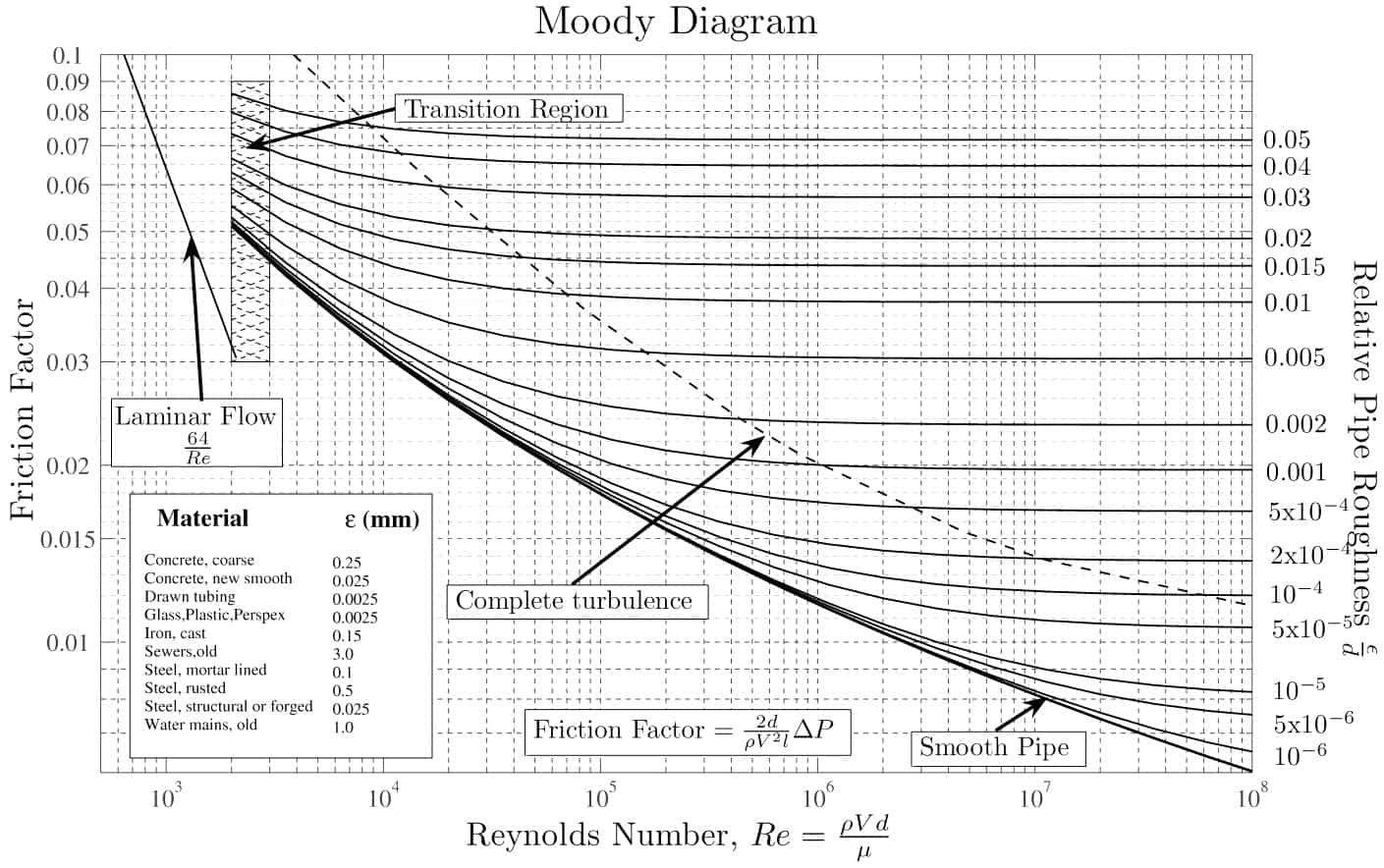For practical purposes, if the Reynolds number is less than 2000, the flow is laminar. The accepted transition Reynolds number for flow in a circular pipe is Red,crit = 2300. For laminar flow, the head loss is proportional to velocity rather than velocity squared. Thus the friction factor is inversely proportional to velocity.
The Darcy friction factor for laminar (slow) flows is a consequence of Poiseuille’s law that and it is given by following equations:
Laminar flow:
- Re < 2000
- ‘low’ velocity
- Fluid particles move in straight lines
- Layers of water flow over one another at different speeds with virtually no mixing between layers.
- The flow velocity profile for laminar flow in circular pipes is parabolic in shape, with a maximum flow at the center of the pipe and a minimum flow at the pipe walls.
- The average flow velocity is approximately one-half of the maximum velocity.
- Simple mathematical analysis is possible.
- Rare in practice in water systems.

